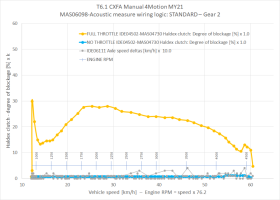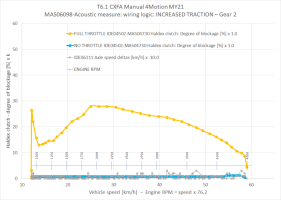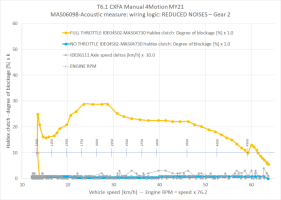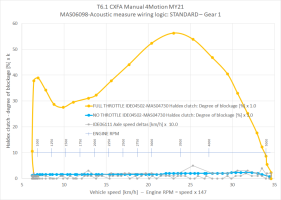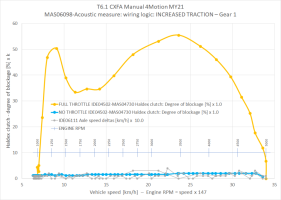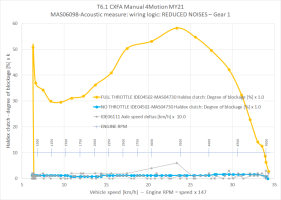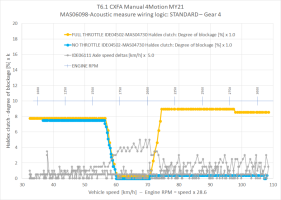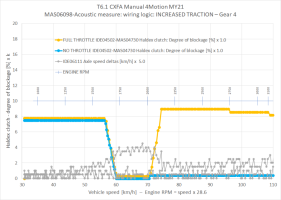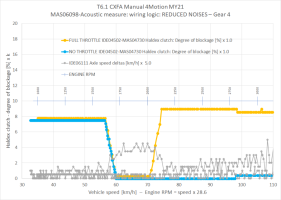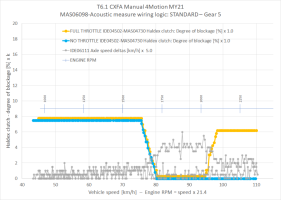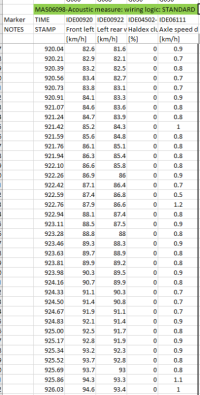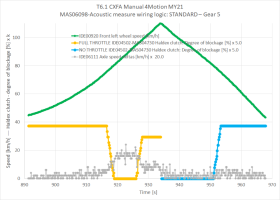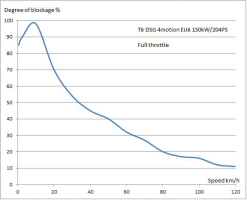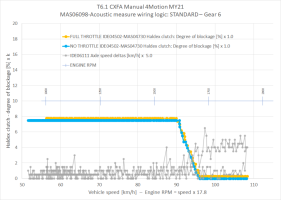4Motion Adaptation channel - MAS06098-Acoustic measure wiring logic
STANDARD / INCREASED TRACTION / REDUCED NOISES
T6/T6.1 Haldex clutch has an adaptation channel which presumably changes clutch clamping behaviour. The channel can be tweaked with various tools.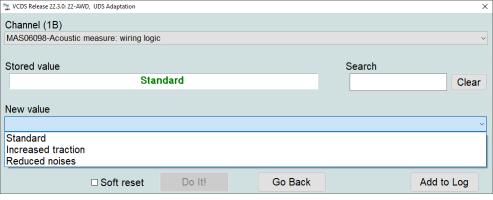
Conditions for the measurements
- Dry tarmac, fairly flat terrain, straight road (no steering input needed)
- The van was crawling with no throttle applied - gear engaged - at stable speed
- The accelerator pedal was floored and kept there untill max speed (road speed limit) - thus recording maximum "degree of blockage"
- Then the van was let to slow down back to crawling - thus recording minimum "degree of blockage"
- Gears 1-4 were measured on all modes, covering speeds up 100+ km/h
Principles of 4Motion
Have been discussed here - 1st post
[T6_measured] 4motion Abnormality And Subsequent Failure
Reference documents: VW Self Study Programme SSP 561 –The T6 2016, which in chapter Power transmission (p.26) for details on 4Motion control logic refers to: VW Self Study Programme 414 – 4MOTION with 4WD coupling generation IV. The document can be read and downloaded at SSP 414 Spesifics...
Measured parameters
- Speed of front and rear wheels
- Speed difference between front and rear axles
- Haldex pump current, current PWM ratio, voltage
- Haldex clutch degree of blockage (based on the pump parameters above)
- Sampling rate approx. 5.5 Hz (for full data set)
Haldex clutch - vehicle speed and Haldex clutch degree of blockage as function of time - Gear 3 - STANDARD
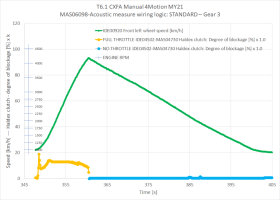
Initial spike most probably is because of flooring the accelerator pedal - timewise it's quite short - approx. 0.5 seconds.
Also in the measurements here the spike is not in "useful" engine rev region (better visualized in pictures below). The spike being at different speed brackets in different modes below is just "operator's error" - obviously didn't let the van crawl slow enough.
Haldex clutch - degree of blockage as function of vehicle speed - Gear 3 - STANDARD
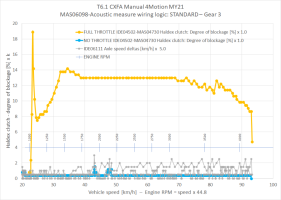
Initial spike most probably is because of flooring the accelerator pedal - timewise it's quite short - approx. 0.5 seconds.
Also here the spike is not in "useful" engine rev region.
Haldex clutch - degree of blockage as function of vehicle speed - Gear 3 - INCREASED TRACTION
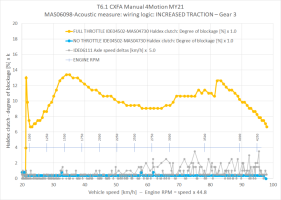
Haldex clutch - degree of blockage as function of vehicle speed - Gear 3 - REDUCED NOISES
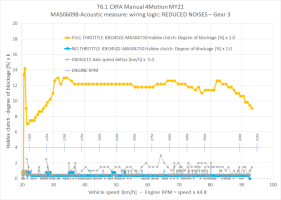
Apologies for titling as [T6_measured] although this one being a T6.1 - just wanted not to deviate from other "reports" in the series . On the other hand the engine on this one is the same CXFA series as experimented in thread [T6_measured] 4motion Abnormality And Subsequent Failure thus the results should be similar on both T6 and T6.1 with same engine.

